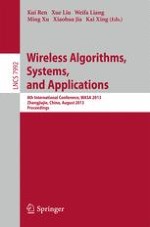2013 | Book
Wireless Algorithms, Systems, and Applications
8th International Conference, WASA 2013, Zhangjiajie, China, August 7-10, 2013. Proceedings
Editors: Kui Ren, Xue Liu, Weifa Liang, Ming Xu, Xiaohua Jia, Kai Xing
Publisher: Springer Berlin Heidelberg
Book Series : Lecture Notes in Computer Science
